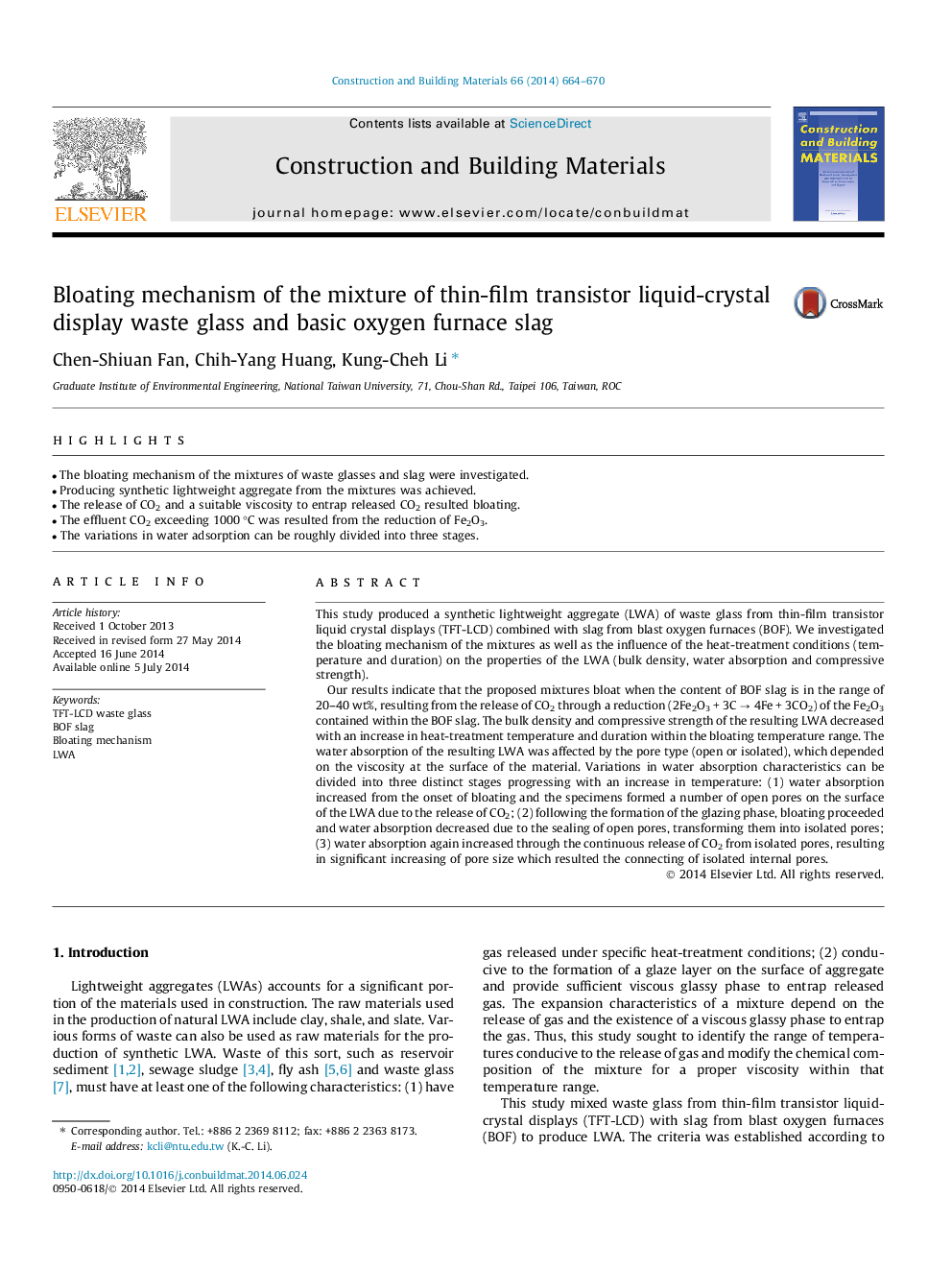| Article ID | Journal | Published Year | Pages | File Type |
|---|---|---|---|---|
| 6722986 | Construction and Building Materials | 2014 | 7 Pages |
Abstract
Our results indicate that the proposed mixtures bloat when the content of BOF slag is in the range of 20-40 wt%, resulting from the release of CO2 through a reduction (2Fe2O3 + 3C â 4Fe + 3CO2) of the Fe2O3 contained within the BOF slag. The bulk density and compressive strength of the resulting LWA decreased with an increase in heat-treatment temperature and duration within the bloating temperature range. The water absorption of the resulting LWA was affected by the pore type (open or isolated), which depended on the viscosity at the surface of the material. Variations in water absorption characteristics can be divided into three distinct stages progressing with an increase in temperature: (1) water absorption increased from the onset of bloating and the specimens formed a number of open pores on the surface of the LWA due to the release of CO2; (2) following the formation of the glazing phase, bloating proceeded and water absorption decreased due to the sealing of open pores, transforming them into isolated pores; (3) water absorption again increased through the continuous release of CO2 from isolated pores, resulting in significant increasing of pore size which resulted the connecting of isolated internal pores.
Related Topics
Physical Sciences and Engineering
Engineering
Civil and Structural Engineering
Authors
Chen-Shiuan Fan, Chih-Yang Huang, Kung-Cheh Li,
